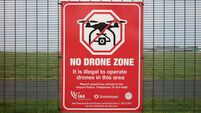Hitting new heights despite the recession
The workforce at the Liebherr Container Cranes Ltd factory in Killarney stands at 607, with a three-cycle shift system in operation to meet the demands of production, which is now at capacity.
The German-owned company, believed to be the longest established multinational in Ireland, has survived recessions, slumps in the international market, three-day weeks, and other difficulties to become one of the country’s most successful manufacturing industries.












